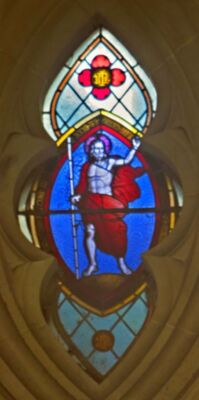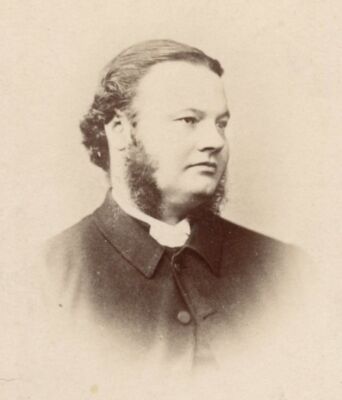William Hutchins
Individual, P059

Biography
William Hutchins (1792-1841) was an English clergyman and Cambridge fellow who arrived in Van Diemen's Land in 1837 to become Archdeacon of Van Diemen's Land and administrator of the Church of England in the colony. His leadership led to the establishment of church schools in Hobart and Launceston, and the Hutchins School in Hobart took its name in his memory.Born on 26th November 1792 at Ainsley, Warwickshire, England, the son of a clergyman, William Hutchins was educated at Atherstone Grammar School in Warwickshire. He entered Pembroke College, Cambridge, and graduated in 1815.
He was ordained into the Church of England shortly after graduating and was appointed curate of Wirksworth. He was appointed to Kirk and Ireton, both in Derbyshire.
The Reverend Hutchins then held a fellowship at Cambridge until 1837. At this time he took up his colonial appointment. He arrived in Hobart on 6th January 1837 on board the 'Fairlie', which also brought Sir John Franklin, new Lieutenant-Governor of Van Diemen's Land, and his suite.
William was appointed Archdeacon of Van Diemen's Land in the Diocese of Australia. His position required that he be the administrator of the Church of England in the colony.
In 1840, he married Rachael Owen, a daughter of the Rural Dean. In the few years that followed his arrival, Archdeacon Hutchins was a strong leader in the movement to found higher educational facilities for the youth of the colony; both in Launceston and Hobart meetings were held and subscriptions opened to establish schools in these centres.
In his dealings with the committees and clergy of Launceston, he was a close friend of the Reverend Dr W. H. Browne of St. John's Church.
Archdeacon Hutchins died in the early morning of 4th June 1841, and in August 1846 Hutchins School opened in Hobart as a living memorial to the Archdeacon.
On 23rd December 1837 Dr Browne at St John’s Church Launceston wrote in his journal that he “put up a transparency at my own expense in the chancel window of our church.” This he had purchased from George Hedgeland (Headsland) of England, early in 1837. It showed The ‘Resurrection’. The Latin inscription was no doubt part of the original and moved with the window. A 'transparency' was a less expensive method ‘… to paint on white glass with transparent coloured enamels…’ (Stained glass in the Middle Ages in England and France by Hugh Arnold [A & C Black, 1913]).
Later at St John’s, as a new chancel was erected in the 1860s the window was moved to the north side of the new chancel as the Cameron window was placed to the east. Some time between 1841 and 1866 the Resurection widow was made the Hutchins memorial.
In 1911 the Hutchins memorial window was repositioned as one of a pair of vesica windows at the base of the dome. It portrays the ascending Christ and a Latin text framing the picture; ‘fui mortis’, ‘et ecce sum’ ‘secula’ (from the Book of Revelation 1:17-18.)
Source
Extract from 'Engraved in Memory' by J.S.Gill. 1988Related object
William Hutchins memorial window (creator)Online Sources
https://adb.anu.edu.au/biography/hutchins-william-2216
The Hutchins School
https://history.hutchins.tas.edu.au/stories/the-origin-of-hutchins/
